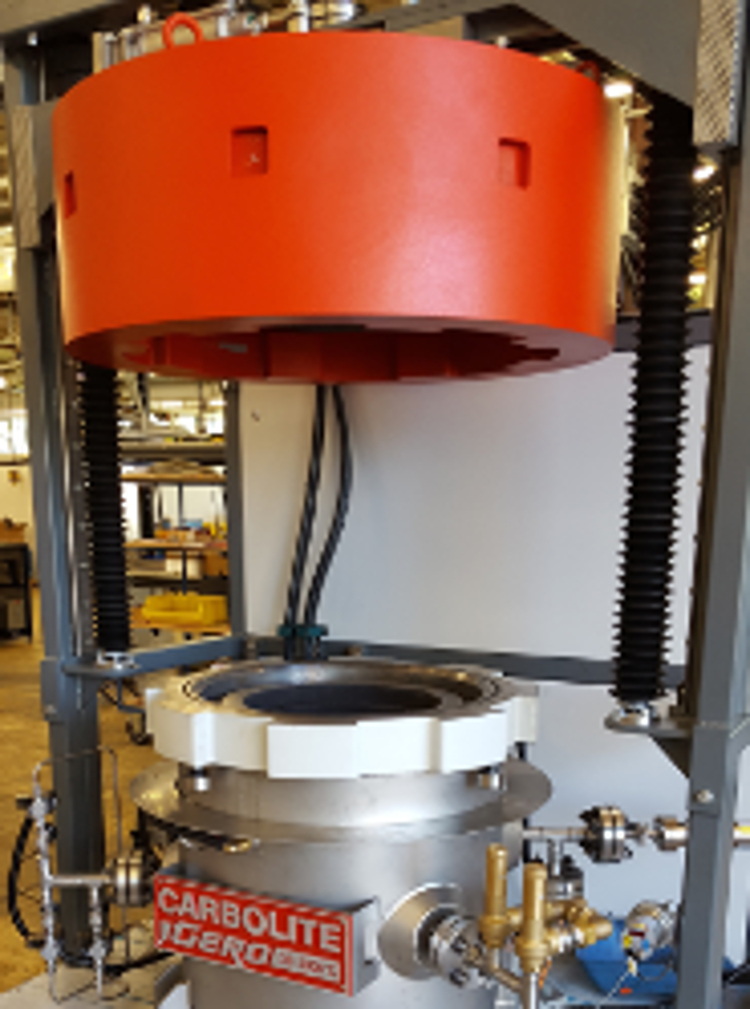Gas pressure sintering furnace
Supervisors: Alex Sangiorgi, Simone Failla
The production of some advanced ceramic materials, like UHTCs, needs special thermal treatments that are normally performed using particular furnaces able to guarantee inert atmosphere (typically Ar or N2) and the possibility to apply some pressure. There is one particular sintering process, called Gas Pressure Sintering (GPS), that combines all these aspects.
The special feature of the GPS technique is a sequence of organic burnout at low pressure, sintering at normal pressure to reach a status with only closed pores being present in the material and finally an increasing of pressure which results in a further densification and faster elimination of the residual porosity.
Finally, GPS process has no shape limitations with respect to the manufactured parts as in hot pressing and it is also an advantageous alternative to the more expansive HIP process.
Gas pressure sintering furnace, LHTG 200-300/24-1G, Carbolite Gero (Germany)
The LHTG furnace is a unique prototype particularly suitable for sintering UHTCs (e.g. TiB2 and B4C). The most important furnace features are:
• Maximum temperature 2200°C
• Maximum pressure 100 bar
• Vacuum 5×10-1 mbar
• Maximum Heating rates: 0-2000°C (725°C/h) and 2000-2300°C (225°C/h)
• Heating elements, furnace chamber and insulation made of graphite
• Double temperature control system composed by a sliding thermocouple and a pyrometer
